Rum and raisin fudge is a creamy vanilla fudge with the addition of raisins which have been soaked in dark rum. It is cooked on the stove top using condensed milk, can be prepared without a sugar thermometer and is quick an easy to make.
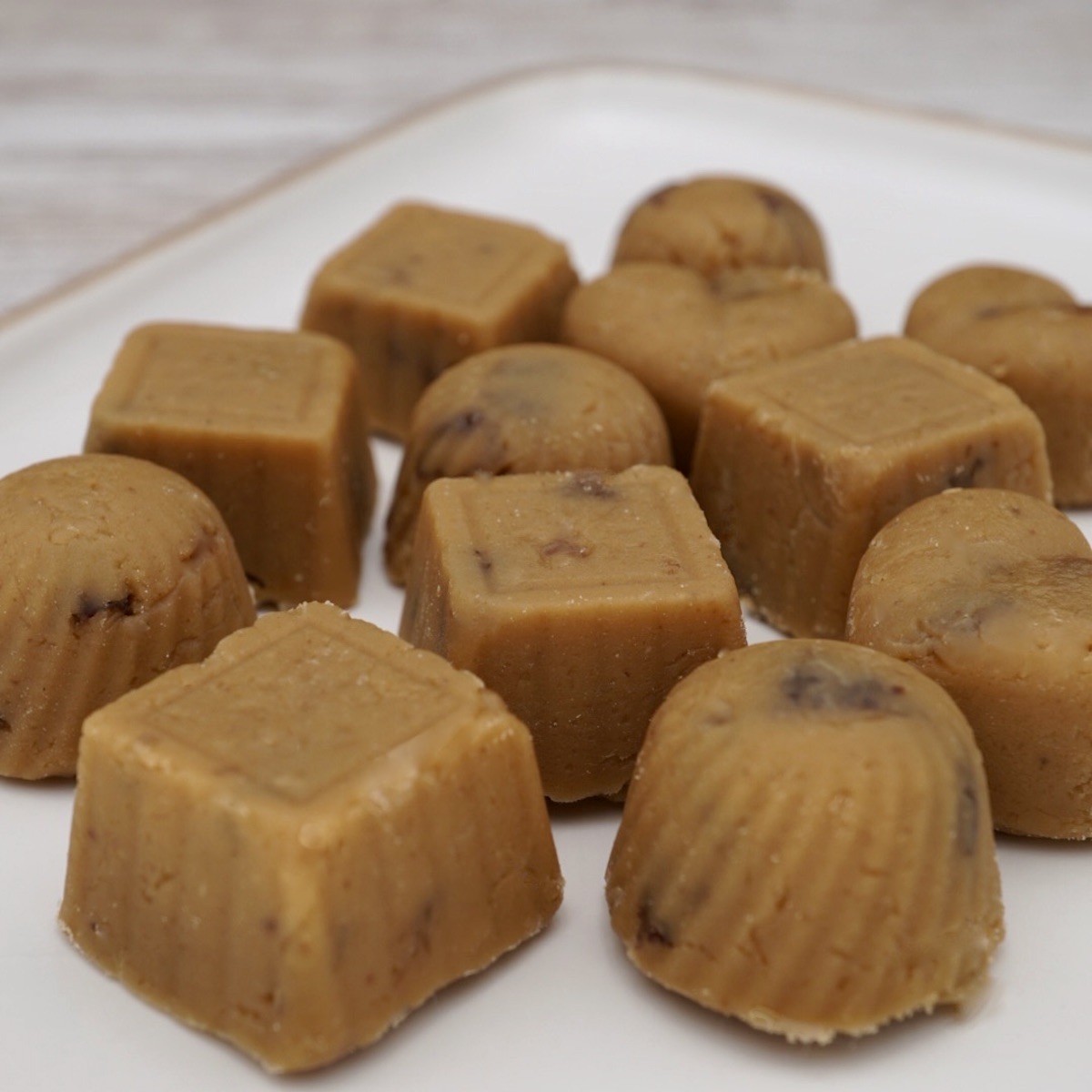
Similar to vanilla and walnut fudge it is perfect served as a dessert or with a cup of tea or coffee.
It also makes a great homemade gift for family or friends. For other homemade gift ideas you might like to try chocolate dates, chocolate salami or white chocolate truffles.
This fudge can either be made in silicone sweet moulds or a lined tin.
The ingredients in this fudge recipe are sufficient to make around 50 individual sweets depending on size or enough for a 18cm square tin.
Before starting this recipe
- Soak the raisins in rum. You can do this quickly by placing in a bowl in a microwave on full power for 30 seconds. Alternatively, you can soak the fruit overnight.
- Muscovado sugar sometimes clumps together during storage. Pour the sugar into a bowl to check for lumps. Discard any hard lumps and squash any soft lumps using your fingers.
- If you are going to make your fudge in a tin, line the base and sides with non-stick baking parchment.
Ingredients
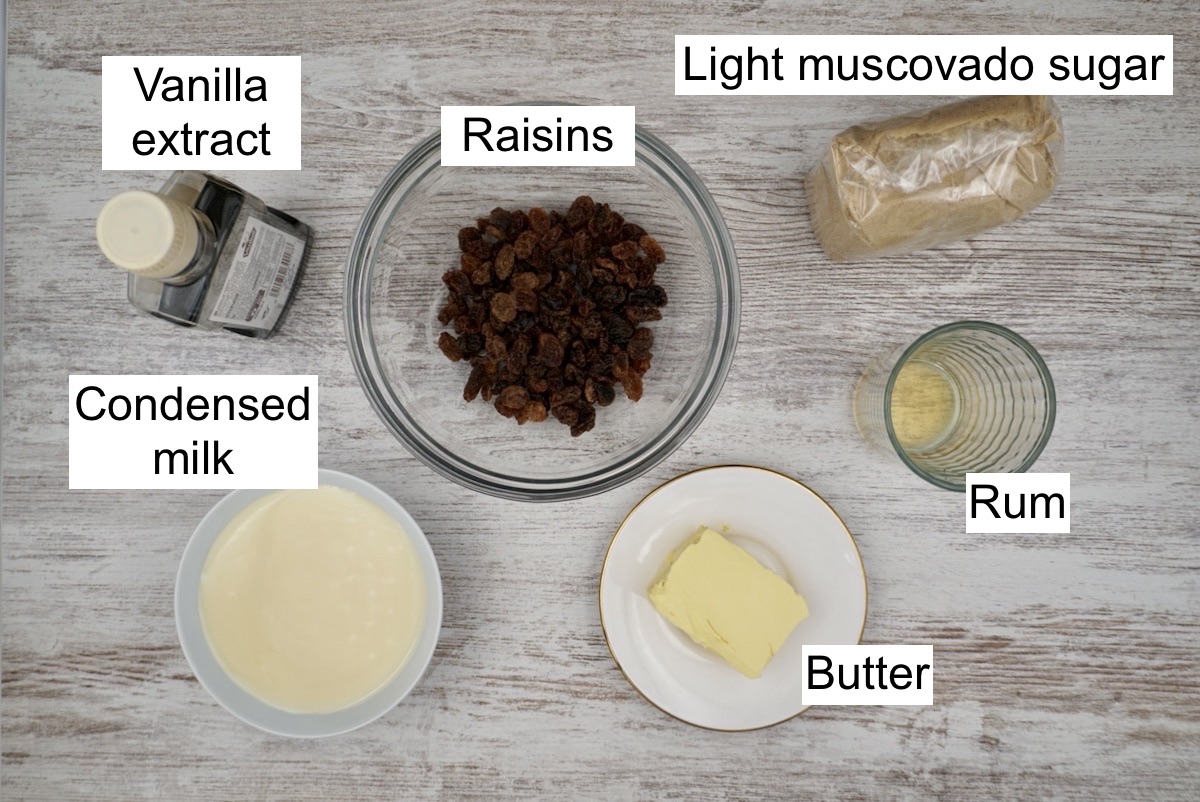
For this rum and raisin fudge recipe you will need:
- 80g raisins - either whole or chopped. You can substitute other dried fruits such as currants or sultanas.
- 3 tablespoons dark rum - dark rum has a richer, deeper flavour than white rum and is better for this fudge recipe.
- 285g condensed milk - condensed milk is thick and sweet and is ideal for making fudge. Don't confuse with evaporated milk which is much thinner and is not suitable for this recipe.
- 300g light muscovado sugar - dark muscovado sugar is not ideal for this recipe as its flavour will overpower the rum and raisin flavour. Save your dark muscovado for other recipes such as Christmas cake.
- 90g butter - you can use either salted or unsalted butter or can substitute a plant based margarine which is suitable for cooking.
- 1 teaspoon vanilla extract - or vanilla essence.
You will also need
You will also need either a selection of silicone sweet moulds or an 18cm by 18cm tin (or equivalent size) and non-stick baking parchment.
How to make
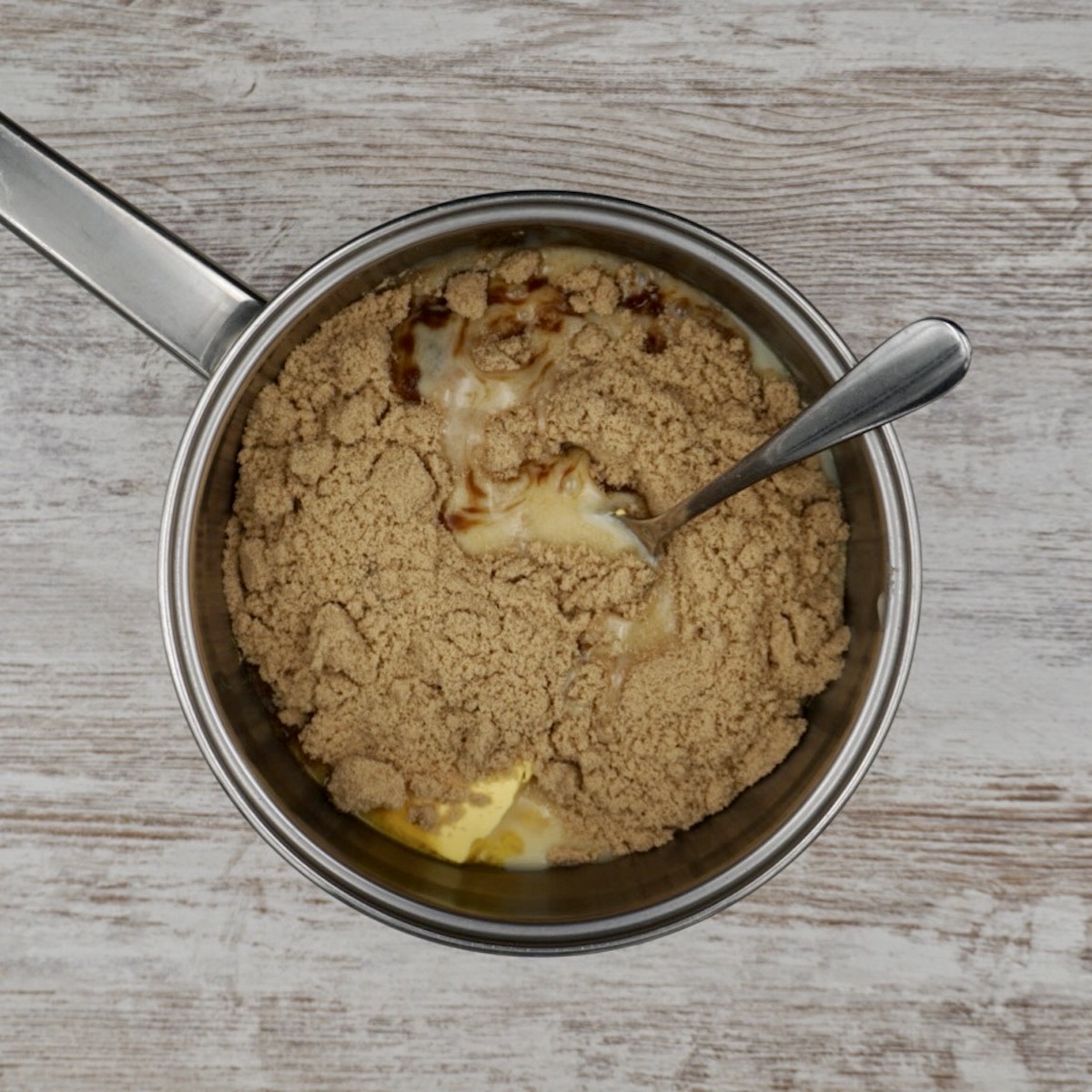
Place the sugar, butter, vanilla extract and condensed milk in a saucepan.
Heat gently, stirring continuously until the butter has melted and the sugar has dissolved.
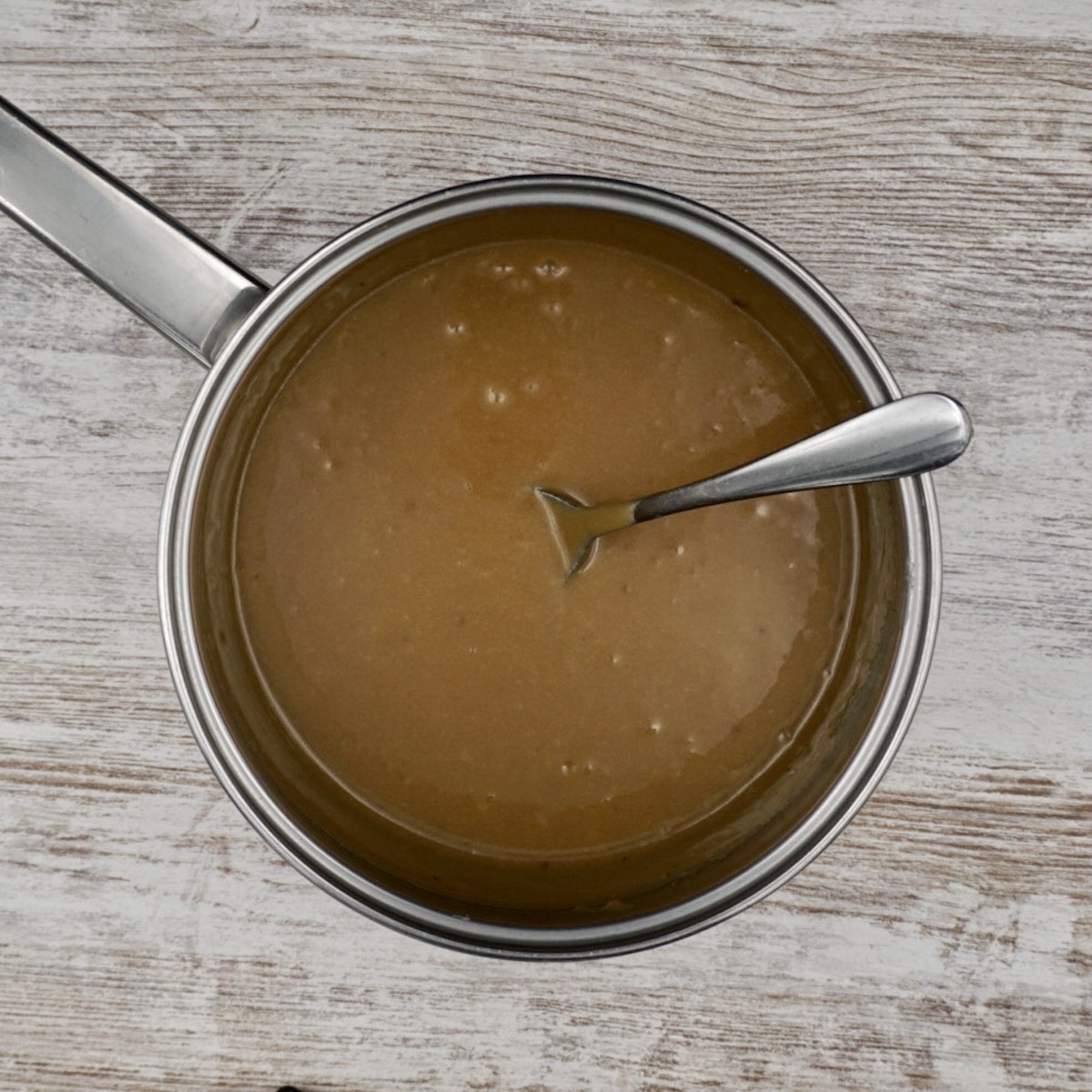
Bring to the boil, stirring continuously, and boil vigorously until the fudge is cooked (soft ball stage). This is likely to take around 5 to 10 minutes. (If you have a sugar thermometer heat to a temperature of 115oC).
If you don't have a sugar thermometer you can check whether the fudge is cooked by carrying out a soft ball test - see next step.
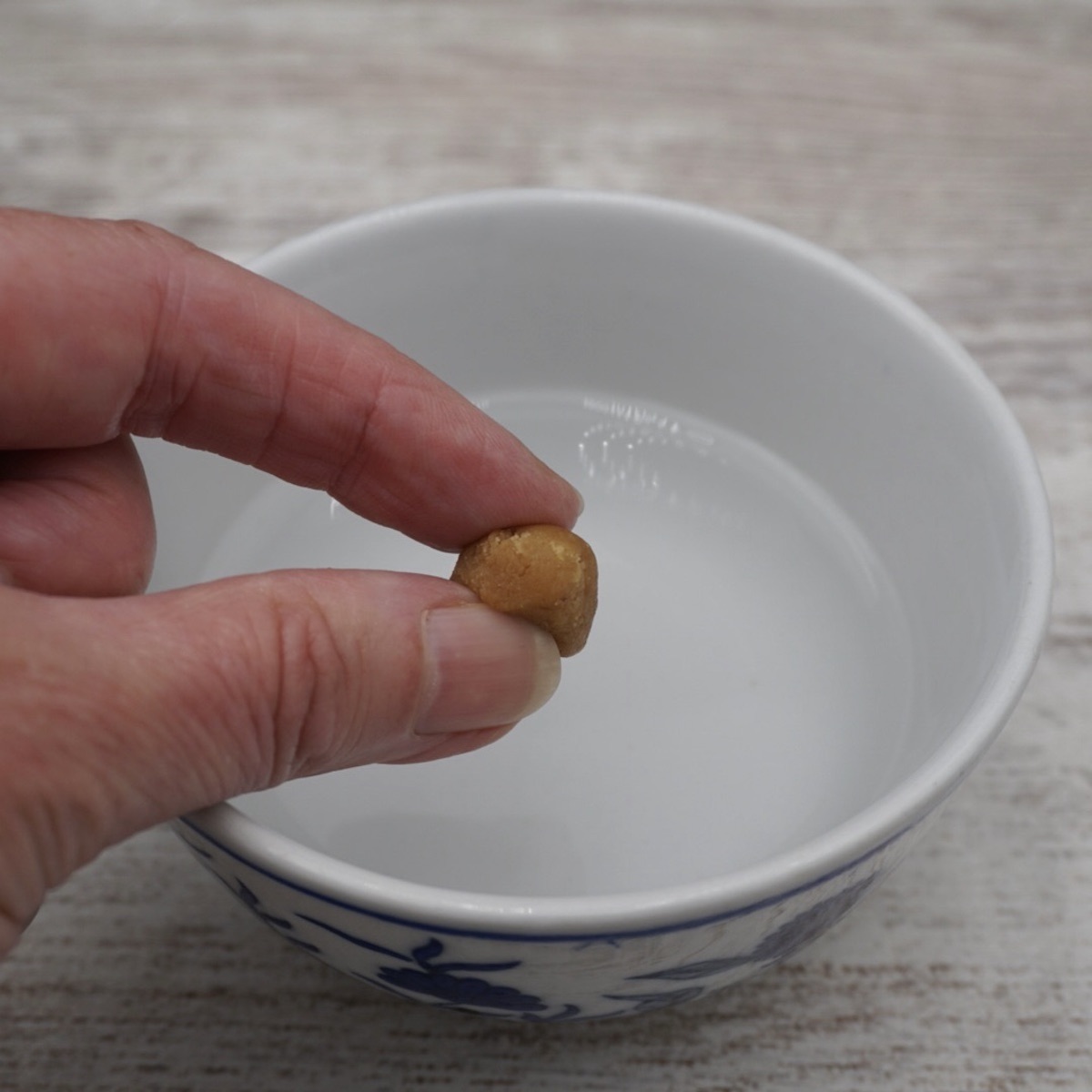
To carry out the soft ball test - drop a small amount of the boiling fudge into a bowl of cold water. The fudge will be cooked when it sets and forms a ball which squashes easily between your finger and thumb.
If the fudge does not set, return to the heat and check again after about 1 to 2 minutes.
If the ball of fudge is hard the fudge is overcooked, but if you check it regularly this shouldn't happen.
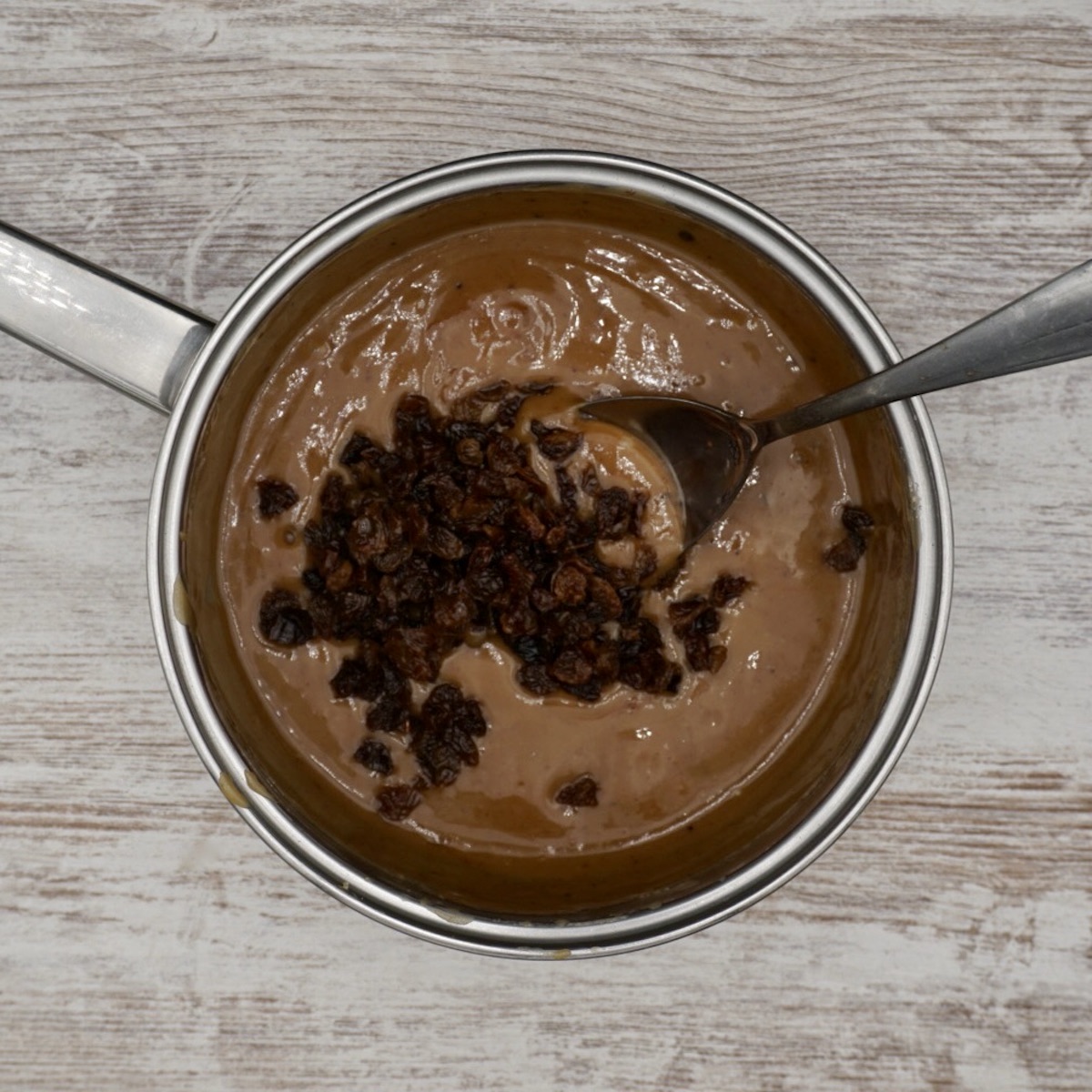
Remove from the heat and leave to cool for a couple of minutes. (If you have a sugar thermometer leave until the fudge has cooled to 110oC).
Add the rum soaked raisins plus any rum which has not been absorbed by the raisins.
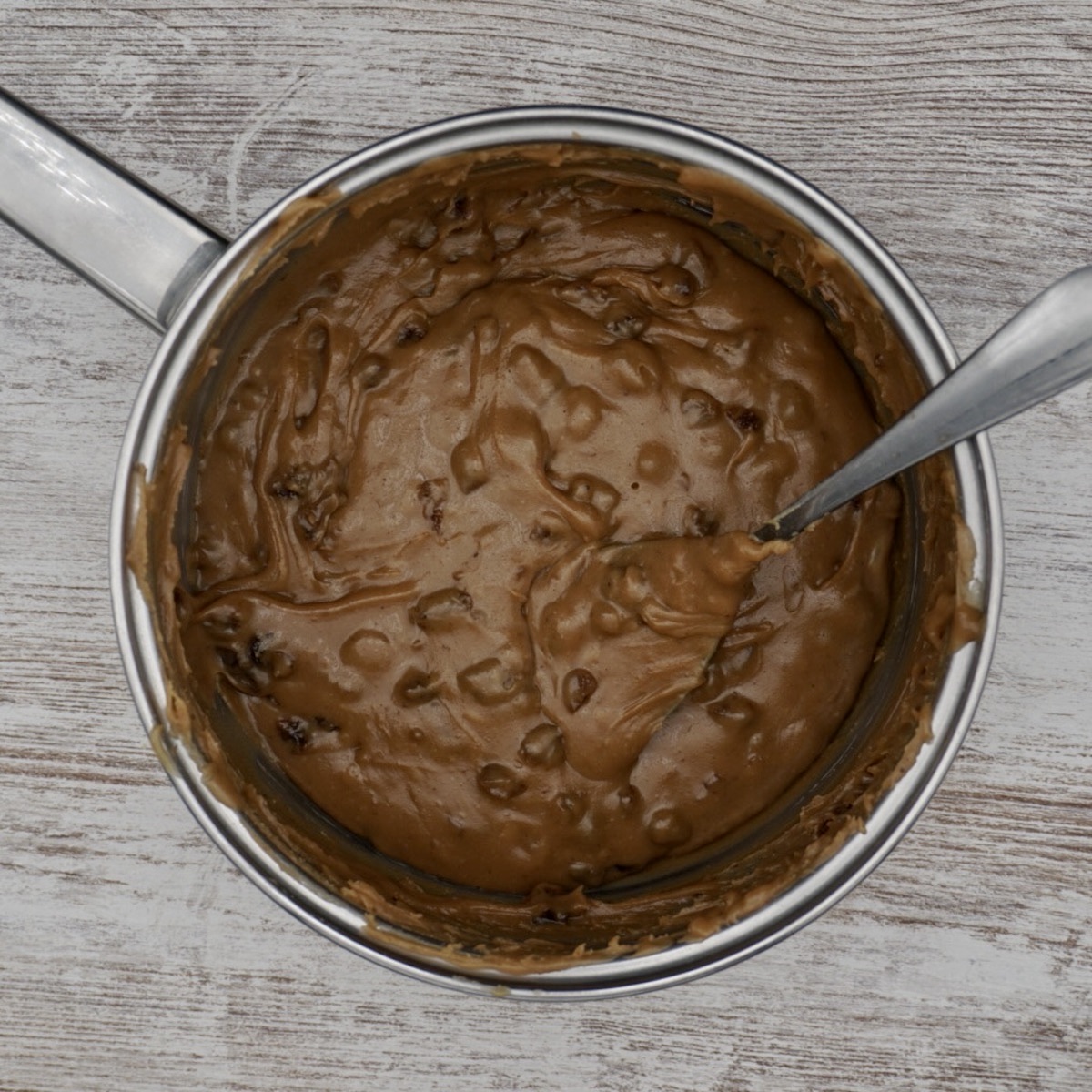
Use a spoon to beat the fudge until it is a dull colour and has thickened. This should take around 3 to 5 minutes.
Transfer to moulds or a lined tin
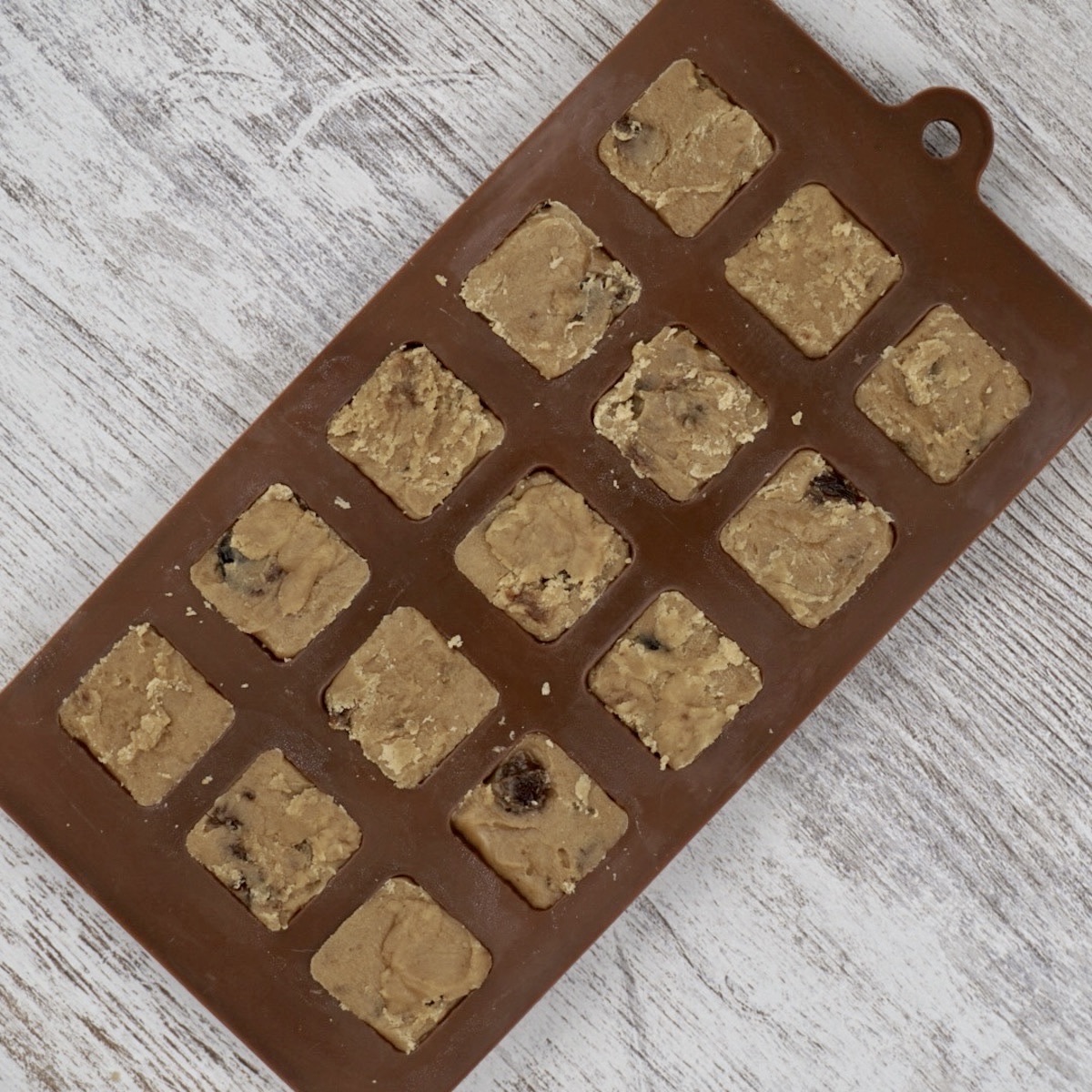
Spoon the fudge into silicone sweet moulds, pressing down firmly to make sure there are no voids.
Alternatively, line an 18cm by 18cm tin with non-stick baking parchment and pack the fudge into the tin, finishing to a level surface with the back of a spoon.
Leave to cool and then chill for a minimum of 1 hour until set. Remove from the moulds or carefully lift out of the tin and cut into cubes.
How to store
- Store your homemade fudge in an airtight container in a cool place or fridge for up to 2 weeks. Remove from the fridge to let them come to room temperature before eating.
- Fudge can also be frozen in an airtight container for up to a month.
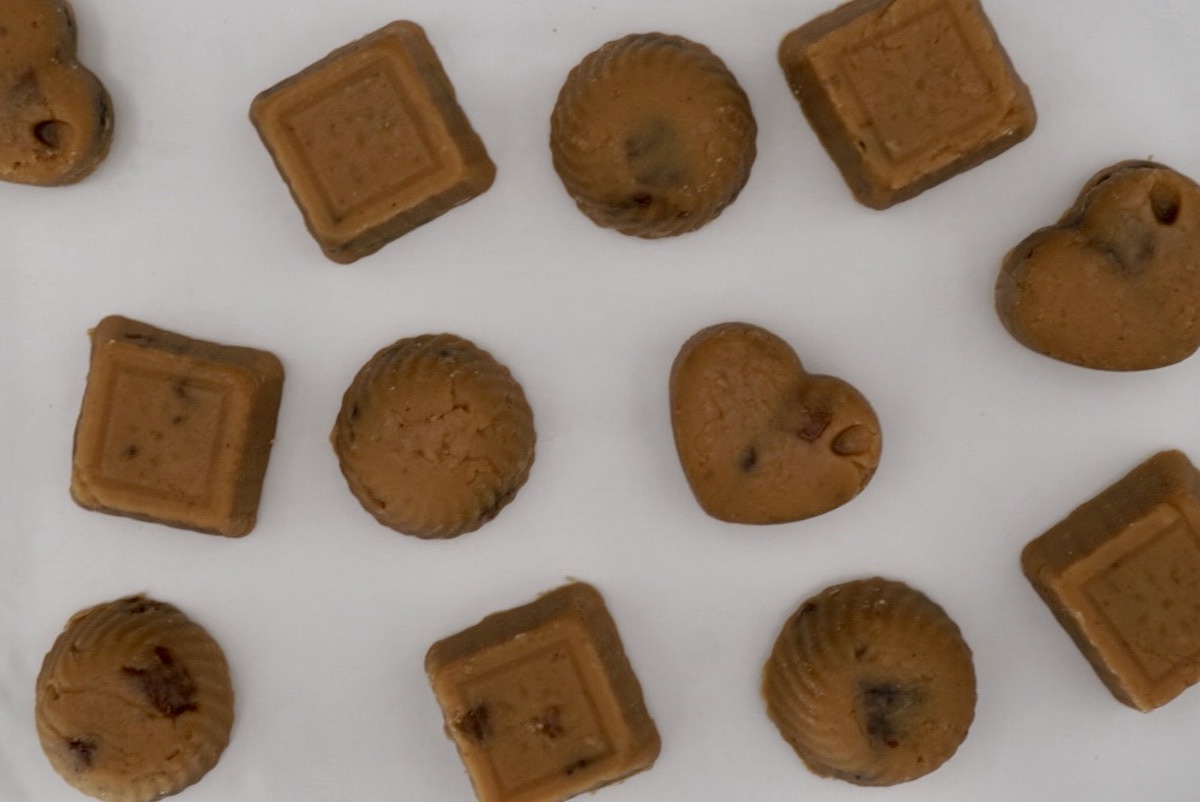
Tips
- If you are making your fudge in a tin, extend the lining paper above the top of the fudge to make it easier to lift out of the tin.
- Check regularly whether soft ball stage has been reached to avoid the fudge becoming overcooked and hard.
- If you have any condensed milk left over you could use it to make some ice cream such as stracciatella, chocolate or coffee and pecan ice cream.
FAQs
Soft ball stage for fudge is when a small amount of boiling fudge forms a soft ball when dropped into cold water, it occurs at a temperature of 112oC to 115oC (234oF to 240oF) and this is when your fudge is cooked.
Yes, fudge can be frozen in an airtight container for up to a month. Defrost at room temperature.
Other homemade gift ideas
- Chocolate rum truffles (vegan rum truffles)2 Hours 25 Minutes
- Chocolate dates with crystallised ginger1 Hours 5 Minutes
- Chocolate salami2 Hours 45 Minutes
- White chocolate truffles2 Hours 50 Minutes
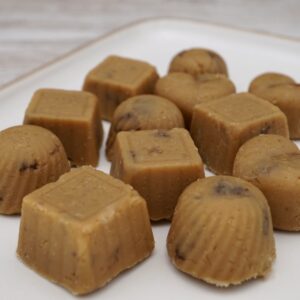

Rum and raisin fudge
Ingredients
- 80 g raisins
- 3 tbsps dark rum
- 285 g condensed milk
- 300 g light muscovado sugar
- 90 g butter
- 1 teaspoon vanilla extract
Instructions
Prepare the fudge
- Place the sugar, butter, vanilla extract and condensed milk in a saucepan.
- Heat gently, stirring continuously until the butter has melted and the sugar has dissolved.
- Bring to the boil, stirring continuously, and boil vigorously until the fudge is cooked. This is likely to take around 5 to 10 minutes. (If you have a sugar thermometer heat to a temperature of 115oC). If you don't have a sugar thermometer you can check whether the fudge is cooked by carrying out a soft ball test - see next step.
- To carry out the soft ball test - drop a small amount of the boiling fudge into a bowl of cold water. The fudge will be cooked when it sets and forms a ball which squashes easily between your finger and thumb. If the fudge does not set return to the heat and check again after about 1 to 2 minutes. If the ball of fudge is hard the fudge is overcooked, but if you check it regularly this shouldn't happen.
- Remove from the heat and leave to cool for a couple of minutes. (If you have a sugar thermometer leave until the fudge has cooled to 110oC).
- Add the rum soaked raisins plus any rum which has not been absorbed by the raisins.
- Use a spoon to beat the fudge until it is a dull colour and has thickened. This should take around 3 to 5 minutes.
Transfer to moulds or a lined tin
- Spoon the fudge into silicone sweet moulds, pressing down firmly to make sure there are no voids. Alternatively, line an 18cm by 18cm tin with non-stick baking parchment and pack the fudge into the tin, finishing to a level surface with the back of a spoon.
- Leave to cool and then chill for a minimum of 1 hour until set. Remove from the moulds or carefully lift out of the tin and cut into cubes.
Notes
- Store your homemade fudge in an airtight container in a cool place or fridge for up to 2 weeks. Remove from the fridge to let them come to room temperature before eating.
- Fudge can also be frozen in an airtight container for up to a month.
- If you are making your fudge in a tin, extend the lining paper above the top of the fudge to make it easier to lift out of the tin.
- Check regularly whether soft ball stage has been reached to avoid the fudge becoming overcooked and hard.
- If you have any condensed milk left over you could use it to make some ice cream such as stracciatella, chocolate or coffee and pecan ice cream.

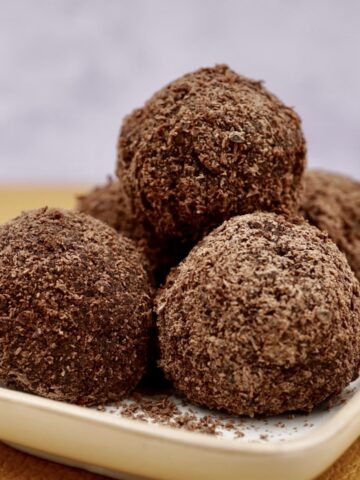
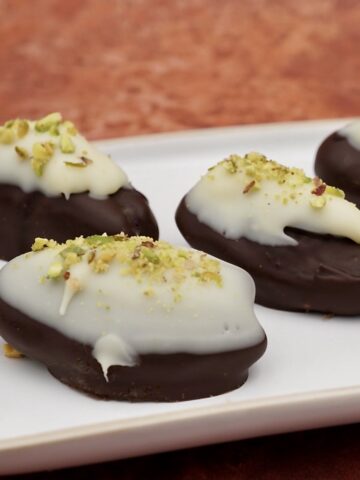
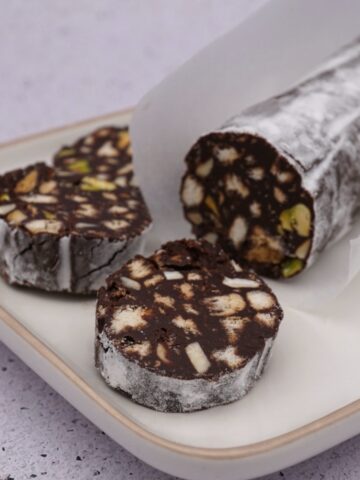


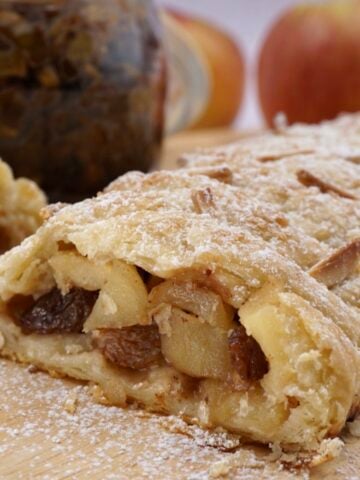
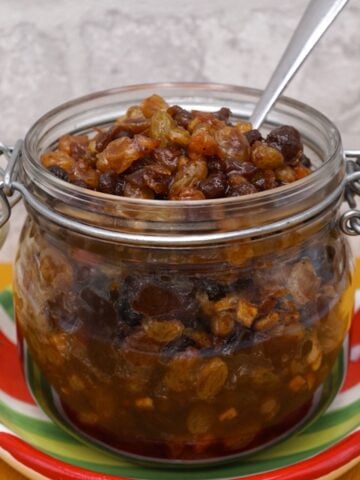

Leave a Reply